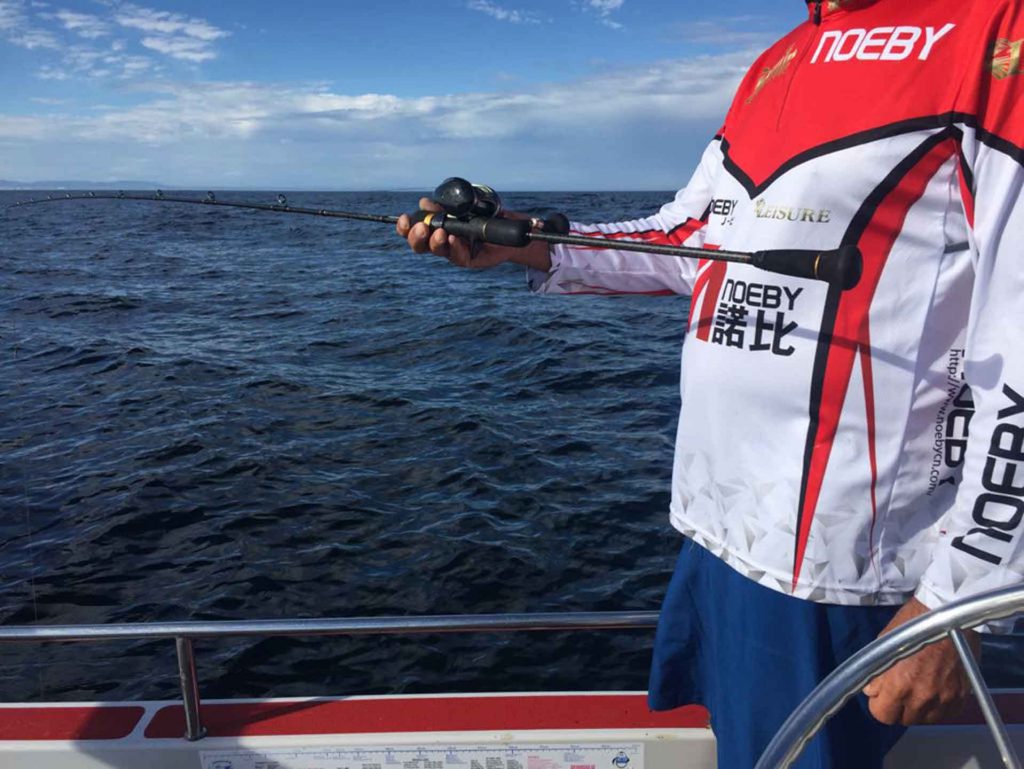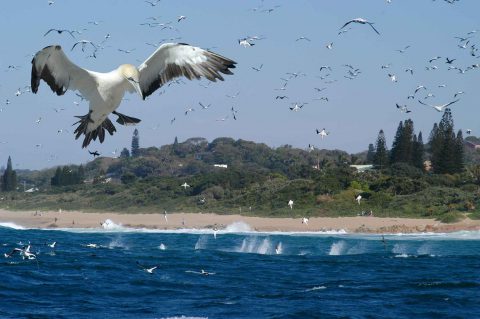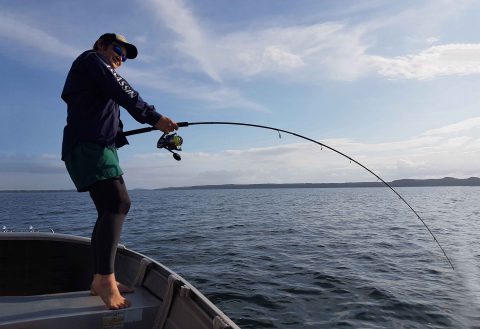Rock Surf & Deep
Introducing Slow Jigging To The Eastern Cape
The bug got hold of us three years ago after watching some YouTube videos and sighting new fishing lures on the internet. This method was developed in Japan and then spread to Europe and Australia. We had to experiment with this method here at Cape St Francis. Our moderate to cool water temperature and different fish species to where it started in the tropics made us doubtful of its success.
Surprised and amazed we were at how effective it was for catching a variety of species. After two seasons of fishing, we have counted 28 species using this method in our home waters. Needless to say, we seemed to hook the bigger fish this way. Most of all it’s fun going to sea without bait, and returning with a fry and plenty of nice pictures just feels like an accomplishment.
Finding The Fish
We found that the best advantage to finding fish is to believe your echo sounder. Look for bait fish like anchovies and maasbanker and start jigging between the bait balls. Structure can be important if looking for reef dwellers but results will be better if bait balls are over the reef.
Working the entire water column will result in surprising catches. We have landed several garrick and tuna this way as they feed higher up in the water. Larger dominant reef and game fish preferred jigs to bait. Water temperature is important with warmer water being best, and a sunny day will result in better catches than when it’s overcast.
Jigging Techniques
The jig itself does most of the work. A long lift of the rod with one turn on the reel followed by dropping the rod tip will make the jig flutter down. The bite can come in both directions. Going up the jig should present a darting fish and when falling a dying injured fish. Small bumps in the action can also excite fish. Don’t rush as you work the water column as the technique should not be tiring.
The Jigs And Rigging
The jigs are rigged with assist hooks in front and on the tail of the jig. The jigs are also designed to be centre-weighted to enable them to flutter down horizontally. For shallow water up to 30m we use 30g to 60g jigs, and as you go deeper use 80g to 120g jigs. Jig colours can have an influence – a blue sardine colour was found to work well with chartreuse green. Brighter colours seem to be preferred over dark colours.
When studying the Japanese way of tying and assembling the hooks to the jig, we found it no more effective than simply tying a single hook to each end of the jig. Most jigs come with double hooks on each assist rig tied to a ring and then connected to the jig with a split ring. Our single hooks tied to both ends of the jig worked as well. Your leader can be attached to the jig with a rapala knot or by using an oval split ring so that the jig is free to move.
Rods And Reels
Slow jigging was designed to be effortless and not tiring. We started off using river rods. However, properly designed rods are now available. These rods come in 6ft lengths with special designed reel seats and butt ends. Rods are classified in three sizes – L for jigs 30 to 120g, ML for jigs 60 to 180g and M for jigs 150g to 350g. We use the ML-size rod the most. When looking at the rod you will note that the front four or five eyes are slanted forward to enable the line to fall off the rod and not catch an eye when dropping the jig. The butt and reel seat are also designed to enable the rod to be held under the armpit while jigging. Rods come in casting and spinning models – casting for an overhead-type reel and spinning for a coffee grinder. Braid from PE2 to PE4 are used. I prefer a Noeby NBSJC 651 ML rod with Noeby Nonsuch DC1200R reel fitted with PE2 braid.
Since our introduction to this part of angling we have had numerous anglers convert from normal bait fishing. So why not give it a go on your next outing? You will also be surprised.






 Sign-up and receive the Business Media MAGS newsletter OR SA Mining newsletter straight to your inbox.
Sign-up and receive the Business Media MAGS newsletter OR SA Mining newsletter straight to your inbox.